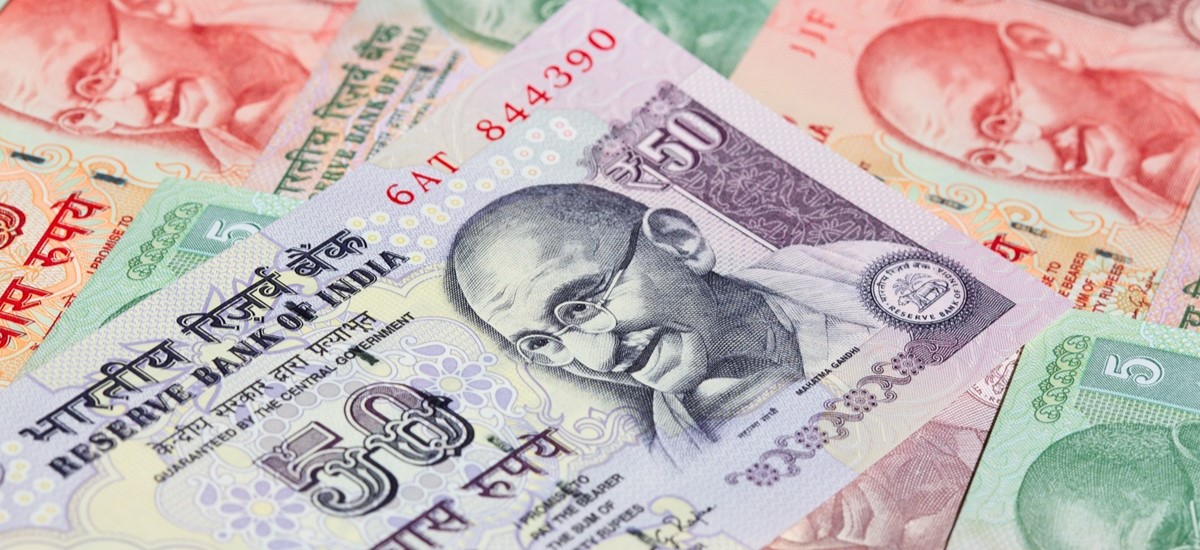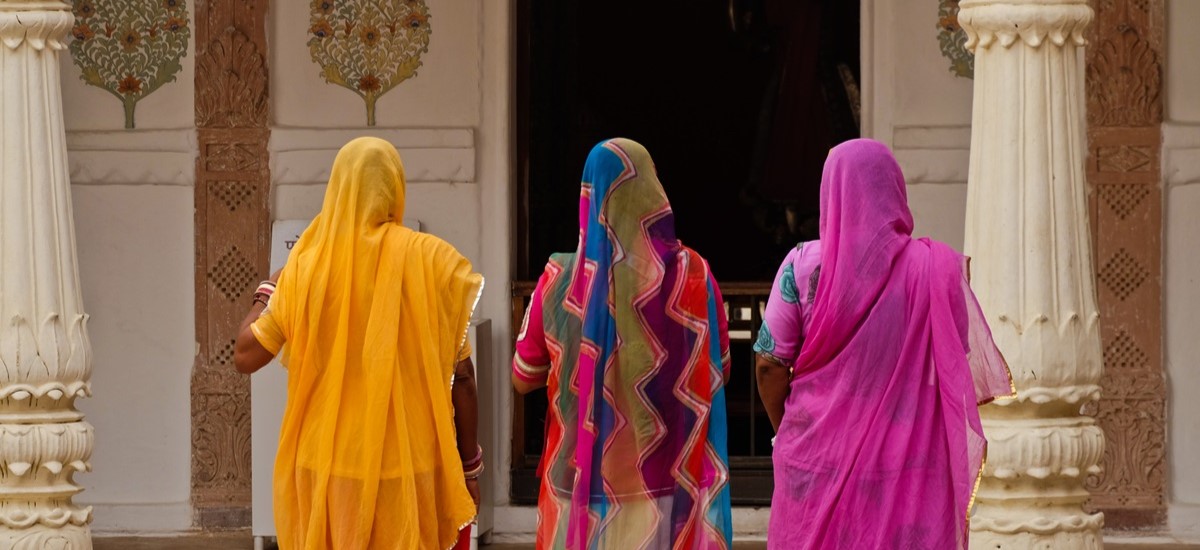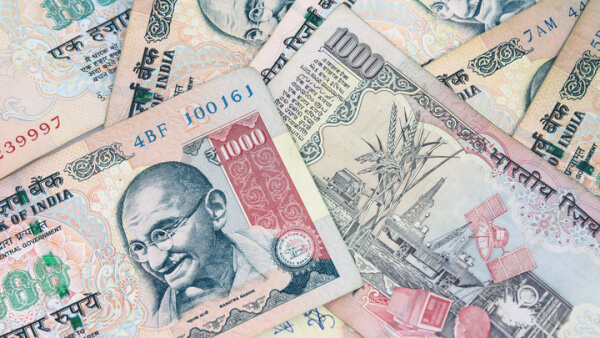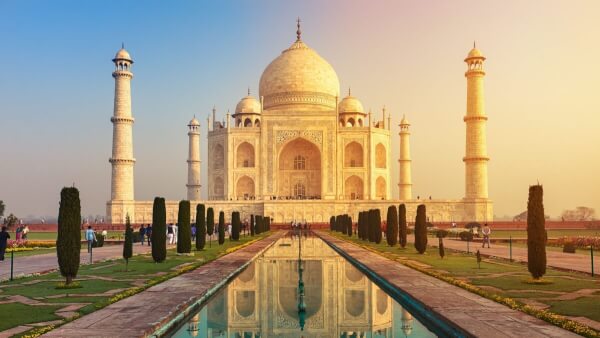Money in India: Banks, ATMs, cards & currency exchange
Read our helpful guide to money, banks and currency in India, plus info on cards and currency exchange.

Planning a trip to India from the UK? Perhaps you’re visiting family, going sightseeing or working in the country for a few months.
Whatever your plans, if you’ll be carrying cash with you to India - this guide is for you.
Read on for a complete guide to the rules and limits for taking cash in or out of India. This includes how and when to declare cash to customs, and what may happen if you carry too much without declaring it.
We’ll also show you a convenient cash-free alternative for spending in India and worldwide - the Wise card.
Importing Indian rupees (INR) isn't allowed for foreigners. The only exception is for residents of India, who can bring in up to 25,000 INR at a time.1
For all other currencies, you can enter India with any amount of cash. However, you must make a declaration to customs officials if you’re carrying cash worth the equivalent of $5,000 US dollars (around £4,022 in GBP).1
You must also declare a combination of cash notes and travellers cheques if the total value exceeds $10,000 USD (around £8,044 in GBP).1
For the purposes of moving it across international borders, the following are usually classed as cash:

Breaking customs rules in India can result in having your cash confiscated at the very least. There’s also the risk of being fined, or in serious cases, being arrested and prosecuted.1
Never had to deal with customs authorities before? It’s understandable if you feel daunted by the prospect, and unsure of the process.
To give you an idea of what to expect, let’s take a look at how to declare cash at customs in India when you arrive at the airport.
If you want to breeze through the airport on arrival and avoid delays at customs, you can declare cash before you fly to India.
To do this, you’ll need to download the ATITHI app. This lets you file a customs declaration in advance of your trip.
You may still need to show airport customs officials some confirmation when you arrive - the app should explain what you need to do.
To declare cash at an airport, once you arrive in India, follow these steps:
If you can’t find a declaration point, ask at the airport information or customer services desk. You can also try looking up the phone number for the customs authority in the Indian state you’ve arrived at.
While you may not be asked for all of it, it’s sensible to have the following ready to provide at customs:

It’s not permitted to take Indian rupees (INR) out of the country, unless you’re an Indian resident - in which case you can take up to 25,000 INR when going abroad.1
As with the rules for entering India, you can leave the country with any amount of foreign currency. But there are a couple of rules to remember:1
You can take cash worth up to 25,000 Indian rupee (INR) out of the country without needing to declare it to customs officials. Anything over this must be declared at the border.
Each country in Asia will have its own rules and limits for how much cash you can bring in before needing to make a customs declaration.
So, it’s recommended to do some research into the rules in the country you’re travelling to, before your departure date.
There are also the UK’s own rules to bear in mind. You can take up to £10,000 GBP in or out of the UK without having to make a customs declaration.2
If you bring too much cash into India and fail to declare it, you risk your money being seized.
You may also be ordered to pay a fine or even face prosecution, depending on the severity of the offence.1
No matter where you’re travelling to once you leave India, you’ll need to declare any cash exceeding the equivalent of $5,000 USD to customs authorities.1
All onward destinations require a customs declaration if you’re carrying more than the equivalent of $5,000 USD, except if you’re travelling between cities or locations within India itself.1

Travelling with large amounts of cash is a security risk, so it’s best avoided unless absolutely necessary.
Consider spending on a travel card instead or withdrawing cash at an Indian ATM when you arrive. You should find ATMs well distributed in major cities and tourist areas, as well as outside Indian banks.
If you do need to carry cash, the safest way to do it is on your person. So, it could be a good idea to get yourself a good quality money belt to wear underneath your clothes.
Carrying a big wad of cash isn’t very discreet, and it’s risky too. If it’s lost or stolen, you’d be left with nothing.
So consider splitting your money between a money belt worn on your person, between members of your travelling party, and between pieces of luggage too.
If you’re carrying money to pay for your trip and need to exchange it once you get to India, you might struggle to find a good deal.
This is especially true of exchanging cash in airports and hotels, where exchange rates are notoriously poor.
Rather avoid the security worries and inconvenience of carrying cash overseas? Check out the Wise card instead.
It’s a truly international debit card, as it works in 150+ countries including India without any foreign transaction fees*.
Best of all, your Wise card automatically converts currency at the mid-market exchange rate whenever you spend, for just a small conversion fee*. If you already have the currency in your Wise account, there’s no fee to pay.
You can also use Wise to send money worldwide for great exchange rates and low fees*.
Along with cash, you also need to declare the following when arriving or leaving in India:
The limit for taking cash in or out of India is per person, not per family. This means you can’t share your allowance with another passenger.3
If you’re heading to India for a wedding, you may be planning to take a gift of gold - perhaps in the form of gold bars or jewellery. This is a common occurrence, as gifts of gold are customary in Indian weddings.
But you’ll need to be sure that you’re not falling foul of customs rules when you travel to India. Here are the key points you need to know:4
If unsure, it’s always best to seek advice from customs officials.
Yes, your UK debit card should be accepted in India wherever you see the Mastercard or Visa symbol. This includes shops, restaurants, hotels and public transport, as well as ATMs.
Sources used:
1. High Commission of India in Singapore - guide for travellers to India
2. GOV.UK - taking cash in and out of the UK
3. Mumbai Airport Customs - guidelines for arrival passengers in India
4. StoneX Bullion - how much gold you can travel with
Sources last checked on date: 28-Jan-2025
*Please see terms of use and product availability for your region or visit Wise fees and pricing for the most up to date pricing and fee information.
This publication is provided for general information purposes and does not constitute legal, tax or other professional advice from Wise Payments Limited or its subsidiaries and its affiliates, and it is not intended as a substitute for obtaining advice from a financial advisor or any other professional.
We make no representations, warranties or guarantees, whether expressed or implied, that the content in the publication is accurate, complete or up to date.

Read our helpful guide to money, banks and currency in India, plus info on cards and currency exchange.

How to travel to India from the UK, including the type of visa you need, how you can apply, how much it costs, and the best way to exchange money.

Travelling to the USA? Read our roundup of the best UK credit cards to use in the USA, comparing interest rates, fees and more.

Travelling to India? Read our roundup of the best UK credit cards to use in India, comparing interest rates, fees and more.

Read our guide on the best travel card for India, including card comparisons and travel tips.

Check out our handy guide to using your Monzo card and account in India, including what fees you can expect.